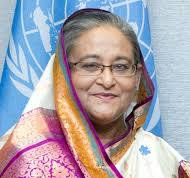"From Tractors to Supercars: The Unstoppable Journey of Ferruccio Lamborghini”
Ferruccio Lamborghini, a middle-aged man with a determined expression, stands beside one of his tractors in the early 1950s, showcasing his hard-earned success. In the background, a factory symbolizing his thriving business is visible. The scene then shifts to a heated exchange between Ferruccio and Enzo Ferrari, both in their prime, with Ferruccio's face showing anger and Enzo’s dismissive smirk. Finally, an image of the Lamborghini 350 GT at the 1964 Geneva Motor Show showcased Ferruccio standing proudly beside it, triumphantly smiling, marking the beginning of his legacy. The modern-day Lamborghini, sleek and powerful, is depicted racing through the streets, symbolizing Ferruccio’s enduring spirit in the brand's design.
The story of Lamborghini's founding is one of ambition, rivalry, and the pursuit of perfection. It's the tale of Ferruccio Lamborghini, a man whose passion for machines turned a personal challenge into one of the most iconic car brands in the world.
### A Passion for Machines
Ferruccio Lamborghini was born on April 28, 1916, in a small village called Cento in northern Italy. Growing up on a farm, Ferruccio was always surrounded by machinery. Even as a child, he showed an extraordinary talent for fixing engines, which led him to pursue a career as a mechanic. During World War II, he was drafted into the Italian Royal Air Force, where he honed his mechanical skills, repairing vehicles for the military.
Imagine a young Ferruccio working tirelessly on farm equipment, his hands covered in grease, a spark of ambition in his eyes.
### The Birth of an Entrepreneur
After the war, Ferruccio returned to his hometown and started his own business, modifying surplus military vehicles into tractors. His company, Lamborghini Trattori, quickly grew, making him a wealthy man. Ferruccio was known for his relentless work ethic and innovative ideas, which made his tractors some of the best on the market.
Picture Ferruccio, a middle-aged man now, proudly standing next to one of his tractors, his factory in the background, a symbol of his hard-earned success.
### The Encounter with Enzo Ferrari
Despite his success in the tractor business, Ferruccio had a love for fast cars. He owned several luxury sports cars, including Ferraris. However, he was dissatisfied with the performance and reliability of his Ferraris, particularly the clutch. Frustrated, Ferruccio decided to take his complaint directly to Enzo Ferrari, the founder of Ferrari.
The meeting was far from amicable. When Ferruccio suggested improvements to the Ferrari, Enzo dismissed him, saying, “You may be able to drive a tractor, but you will never be able to handle a Ferrari properly.” This insult struck a nerve in Ferruccio, igniting a fire within him.
Imagine Ferruccio and Enzo in a heated exchange, Ferruccio’s face red with anger, anger, and dismissive smirk making the moment even more intense.
### The Birth of Lamborghini Automobile
Determined to prove Enzo wrong, Ferruccio set out to create his own high-performance sports car. In 1963, he founded Automobili Lamborghini in Sant'Agata Bolognese, a small town in northern Italy. Ferruccio recruited some of the best engineers and designers, and within a few months, they unveiled the Lamborghini 350 GT at the 1964 Geneva Motor Show.
The car was a masterpiece. It had a V12 engine, a sleek design, and unmatched performance. The 350 GT was just the beginning. Lamborghini continued to push the boundaries of automotive design, creating legendary models like the Miura, which became the world's first supercar.
Picture the Lamborghini 350 GT on display at the Geneva Motor Show, with Ferruccio standing beside it, a triumphant smile on his face, knowing he had just made automotive history.
### A Legacy of Excellence
Ferruccio Lamborghini’s drive to create perfection led to the birth of a brand that became synonymous with luxury, speed, and innovation. Even after selling the company in the early 1970s, his legacy lived on through the cars that continued to bear his name.
Imagine the modern-day Lamborghini, sleek and powerful, racing through the streets, with Ferruccio’s spirit embedded in every detail of its design.
Ferruccio Lamborghini passed away in 1993, but his story remains an inspiration—a testament to the power of determination, passion, and the courage to turn a challenge into an opportunity.
#FerruccioLamborghini #LamborghiniHistory #Lamborghini350GT 3 #TheEnzoFerrariRivalry #LamborghiniFounder #AutomobiliLamborghini
#Lamborghinilegacy



